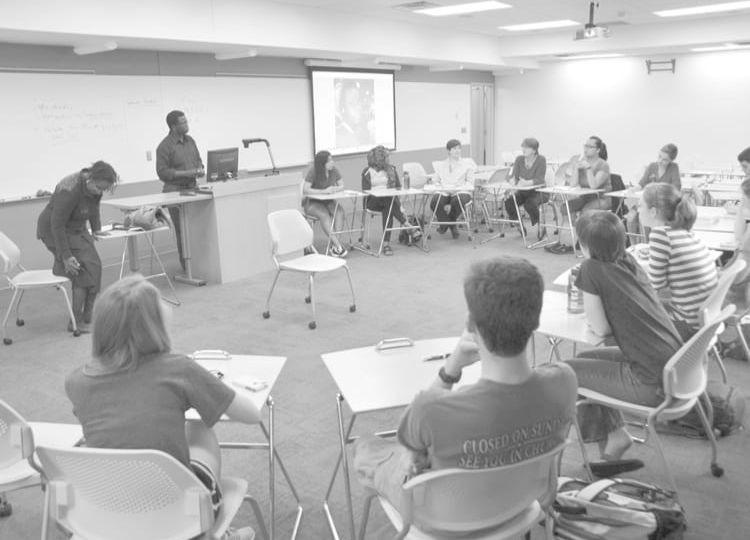
From Sept. 15 to Sept. 19, St. Olaf sponsored a series of lectures to discuss the events in Ferguson, Mo. Faculty, staff and students tackled issues such as race, class and social privilege. The goal was to give the St. Olaf community a framework in which to discuss the difficult events surrounding the shooting of Michael Brown.
One of the discussions in this series was Sept. 17’s “Exploring Class and Classism,” headed by Assistant Professor of Education and Math, Computer Science and Statistics Sharon Lane-Getaz. It emphasized perceived social status and discrimination. Attendees were prompted to consider both their income-based social class and their perceived social class, and consider the impact of social status on their lives.
Before the session began, those attending were asked to move the chairs from their normal, neat rows to form a circle in the center of the room. While not strictly a lecture, the session began with a brief rundown of the sociological tools used to define and understand class. Concepts such as cultural and social capital were introduced, along with a statement of the “Ground Rules” of the discussion: “No blame, no shame and no credit.” This statement set the tone of discussion. For the sake of conversation, no class-based experiences were to be considered shameful. This included an agreement of confidentiality, sensitivity and respect for those willing to share.
After building a basis for conversation, attendees were prompted to conceptualize themselves as 10-year-olds, taking in how their class would be perceived as a developing purveyor of a perceived simpler world.
Around the room different signs with numbers from one to six were placed, representing various social classes. Different questions would appear on the projector, regarding the education or employment level of an individual’s parents, their jobs or the nature of their housing. Individuals in different segments were encouraged to discuss whether their placement corresponded with their perception of their own social status.
After the informal collaboration, those people designated to be in similar social classes were sent to discuss the benefits and obstacles of their particular classes.
The group came to an interesting conclusion regarding the “middle” class. Students realized that many who considered themselves “middle class” had been leaders in some sport, club or other organization in high school.
The discussion then shifted to the idea of a “middle-class work ethic.” Many credited their parents and former teachers as fine examples of this work ethic.
Through discourse, people became more introspective, offering personal stories or applying the class-based framework to their own upbringings. Overall, there was a tacit consensus that class held more power in defining an individual than most had previously realized. Class perception is omnipresent in daily life, especially in human interaction.
After the small group discussion, the attendees congregated yet again in the center and shared what they had discovered.
While the concluding discussion did not mention the situation in Ferguson and its implications directly, it was clear how the prejudices of classicism had influenced the aftermath of the shooting of Michael Brown. Class is a pervasive force in United States society, and its influence is often overlooked.
campbe1@stolaf.edu
Photo Credit: ANDREW WILDER/MANITOU MESSENGER

